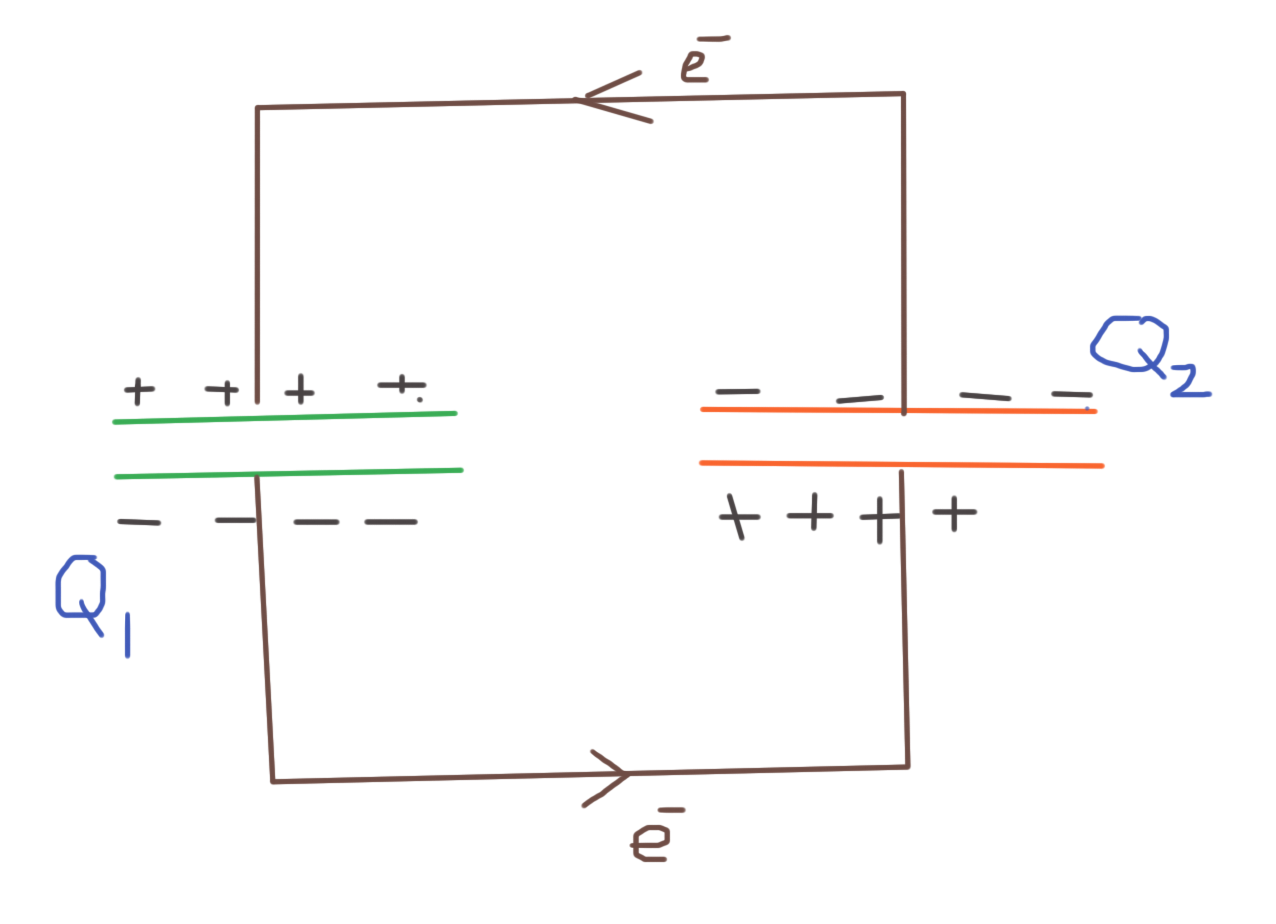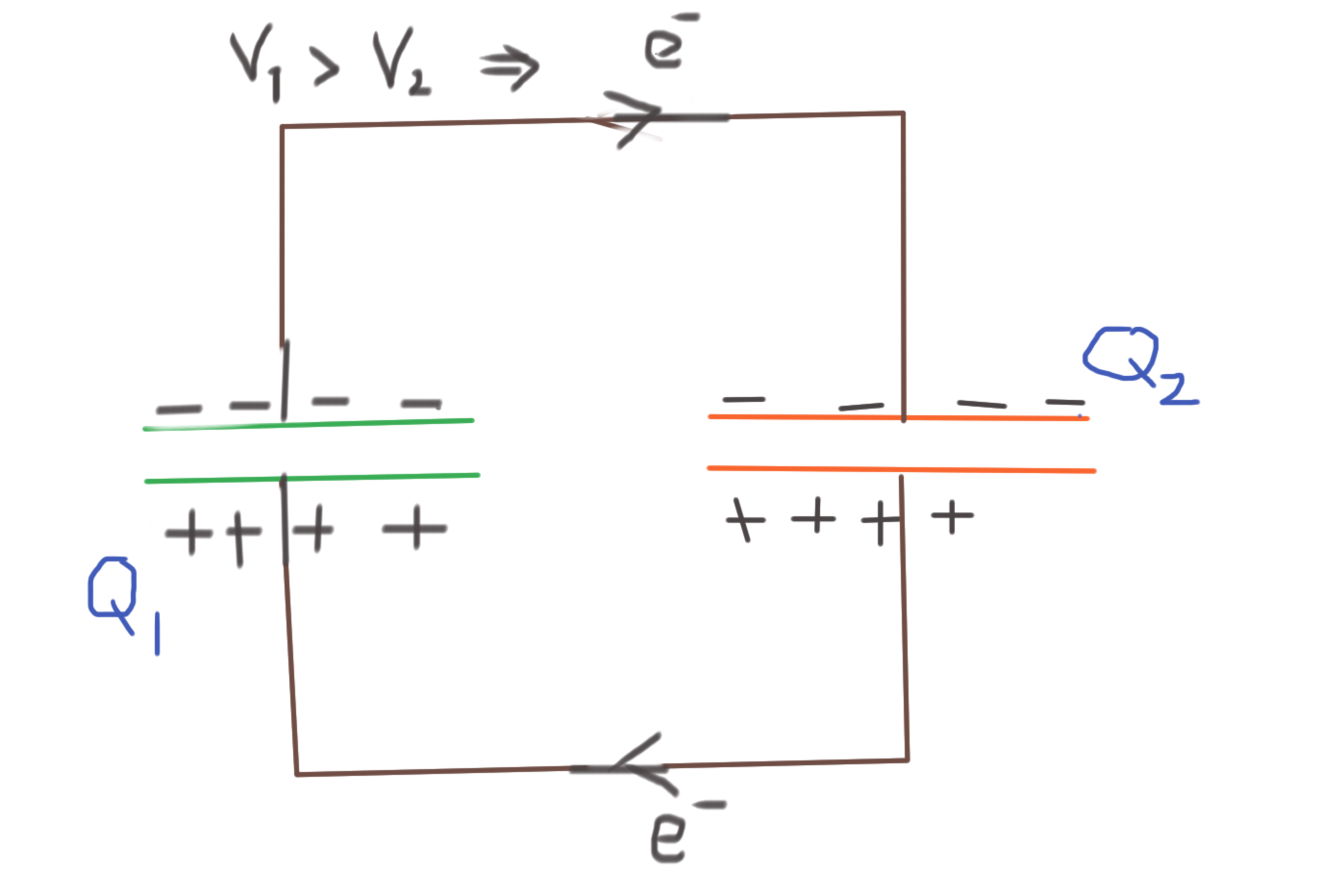Question #959ae
1 Answer

Assuming for now that we are connecting opposite-charged plates, you see that, in the first instance, if we think in terms of current as the movement of electrons, there will be a flow of charge as shown due to the charge imbalance.
That charge balance we can also describe in terms of potential. The electrical potential energy in the arrangement will reduce if the current flows as indicated. If the charges exactly cancel out, there is no longer electrical potential energy stored in the arrangement.
More generally, if
That surplus charge will re-distribute so that the potential across each capacitor is the same..... so that the potential difference between each connected plate is zero..
At that equilibrium point:
If, when connected, we have zero potential across the capacitors, ie
Ie the capacitors started out with the same amount of charge.
Then as

If we connect like-charged plates, it's the same idea. Charge will re-allocate itself amongst until the connected plates are at the same potential. This means the drop across each capacitor will be the same. However, you are guaranteed a drop across each capacitor as the charge imbalance across the plates has just been re-distributed. It is still there.

